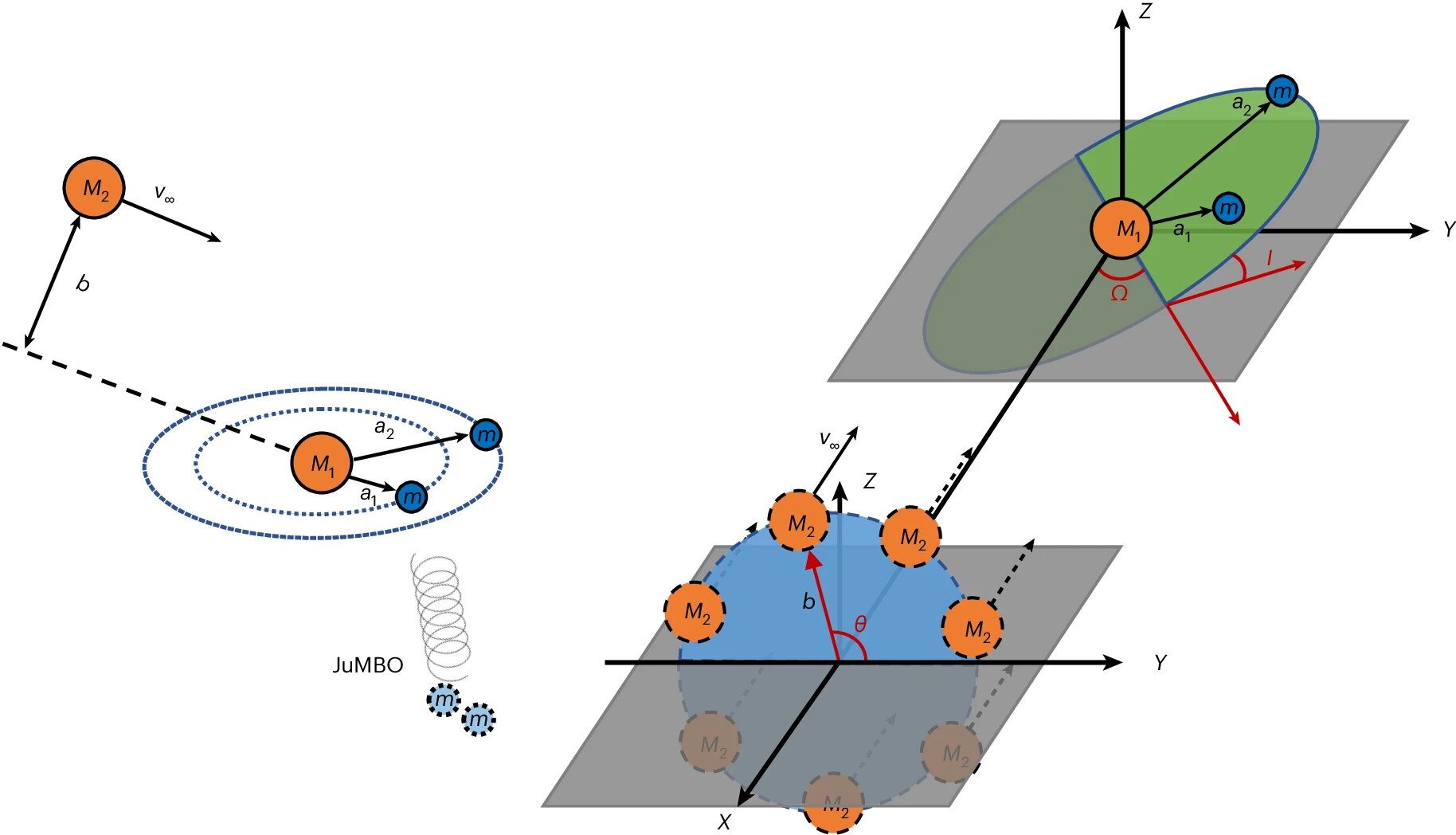× close
The recent discovery of a potential new class of distant and mysterious “free-floating” planets has intrigued astronomers since stunning new images captured by the James Webb Space Telescope were shared late last year.
These candidate planets, known as Jupiter-mass Binary Objects (JuMBOs), seem to orbit one another as they float freely in space unbound to any star—which counters prevailing theories of how planetary systems were thought to work.
Now, a new study by a team of astrophysicists from UNLV and Stony Brook University, published April 19 in the journal Nature Astronomy, introduces a compelling model for how these JuMBOs may have formed.
The team used advanced techniques, known as direct N-body simulations, to explore how interactions within dense stellar clusters could lead to the ejection of giant planets that remain gravitationally bound to each other as they drift through the galaxy. This significant research offers a model for how these enigmatic binaries may form, filling a critical gap in our understanding of planetary evolution.
“Our simulations demonstrate that close stellar encounters can spontaneously eject pairs of giant planets from their native systems, leading them to orbit each other in space,” said study corresponding author Yihan Wang, a postdoctoral fellow with the Nevada Center for Astrophysics at UNLV. “These findings could significantly alter our perception of planetary dynamics and the diversity of planetary systems in our universe.”
The research indicates that such events are more likely to occur within densely populated star clusters, suggesting that free-floating binary planets could be more common than previously thought. The characteristics of these planetary pairs—such as their separation and orbital eccentricity—provide new insights into the violent environmental conditions that influence planetary formation.
“It introduces dynamic stellar interactions as an important factor in the development of unusual planetary systems in dense stellar environments,” said Rosalba Perna, study co-author and professor of physics and astronomy at Stony Brook University.
According to researchers, this new work broadens what we know about planetary formation and also sets the stage for future observations with the James Webb Space Telescope (JWST), which could provide further evidence supporting the team’s predictions.
“Understanding the formation of JuMBOs helps us challenge and refine the prevailing theories of planet formation,” said UNLV astrophysicist and study co-author Zhaohuan Zhu. “Forthcoming observations from the JWST may help us do just that, offering new insights with each observation that will help us better formulate new theories of giant planet formation.”
More information:
Yihan Wang et al, Free-floating binary planets from ejections during close stellar encounters, Nature Astronomy (2024). DOI: 10.1038/s41550-024-02239-2

Dr. Thomas Hughes is a UK-based scientist and science communicator who makes complex topics accessible to readers. His articles explore breakthroughs in various scientific disciplines, from space exploration to cutting-edge research.








